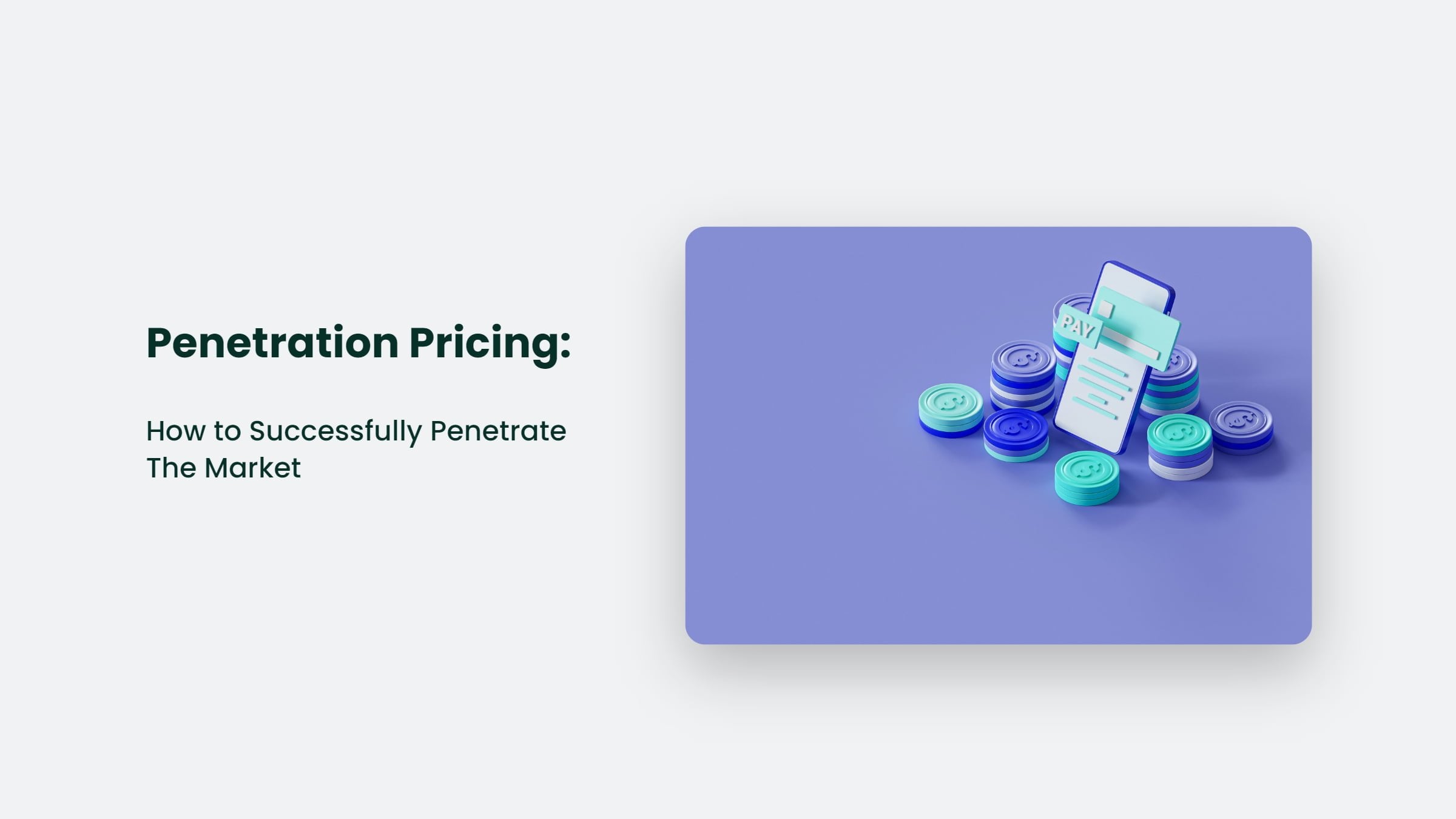Are you tired of seeing your competitors dominate the market? Are you ready to give them a run for their money and stand out in a crowded market? Penetration pricing strategy may be the secret weapon you need.

What is Penetration Pricing:
Penetration pricing is a pricing strategy companies use to quickly gain market share by offering a lower price than competitors. The idea is to attract customers with a lower price and then gradually increase the price as the market becomes more competitive. It’s a way to “penetrate” the market and establish a foothold in the industry. It can be done by either decreasing the price of the product or increasing its value.
How Does Penetration Pricing Work:
Penetration pricing works by setting a lower price for a product or service than competitors to attract customers. The lower price is intended to draw in customers who may be hesitant to try a new product or service.
This strategy is often used to gain a foothold in a market and to build a customer base before competition becomes more fierce. Once the company has established a customer base, it can gradually increase the price to a level that is more in line with competitors.
Pros and Cons of Penetration Pricing:
As with any pricing strategy, penetration pricing has pros and cons.
Pros:
- Quickly gain market share
- Attract price-sensitive customers
- Establish a foothold in the industry
- Can increase customer loyalty
- Increase the awareness of the product
Cons:
- It can lead to lower profit margins
- It can be difficult to increase prices later
- It can lead to a price war with competitors
- It can be difficult to sustain in the long term

How to Implement Penetration Pricing Effectively:
Implementing a penetration pricing strategy can be tricky. Still, with the right approach, it can be a powerful tool for companies looking to enter a new market or launch a new product.
- Research the market: Understand your competitors and their pricing strategies. It will give you an idea of where to set your prices and what value you can offer to customers that your competitors are not.
- Set a lower price: Start with a lower price than competitors to attract customers.
- Gradually increase prices: Once you’ve established a customer base, increase prices to a level more in line with competitors.
- Monitor the market: Keep an eye on competitors and adjust your pricing strategy as needed. It includes monitoring customer feedback and adjusting your pricing to reflect the value you are offering.
- Bundle products or services: Offering bundled packages can increase the product’s perceived value and make it more attractive to customers.
- Use promotions and discounts: Offering promotions and discounts can also be a great way to attract customers and stand out in the market.
Real-Life Examples of Penetration Pricing:
Penetration pricing is a strategy that many companies have used with great success. Some examples include:
- To attract customers, Netflix’s initial pricing for their streaming service was significantly lower than competitors.
- Walmart’s everyday low prices strategy is a form of penetration pricing, as they offer lower prices than competitors to attract customers.
- Apple’s iPhone pricing strategy is a form of penetration pricing, as they initially offer a lower-priced model to attract customers and gradually increase prices with new releases.
The Bottom Line:
In conclusion, penetration pricing is a powerful tool for companies looking to enter a new market or launch a new product. By offering a lower price than competitors, companies can quickly gain market share and establish a foothold in the industry. However, it’s essential to weigh the pros and cons, approach cautiously, and implement it effectively.
If you’re ready to give your competitors a run for their money and need help implementing a penetration pricing strategy, don’t hesitate to contact us. We’re here to help, and we’ll be more than happy to assist you in making the most impact with your product launch and standing out in a crowded market.


![The ‘Giveaway Piggy Back Scam’ In Full Swing [2022]](https://www.cjco.com.au/wp-content/uploads/pexels-nataliya-vaitkevich-7172791-1-scaled-2-683x1024.jpg)

